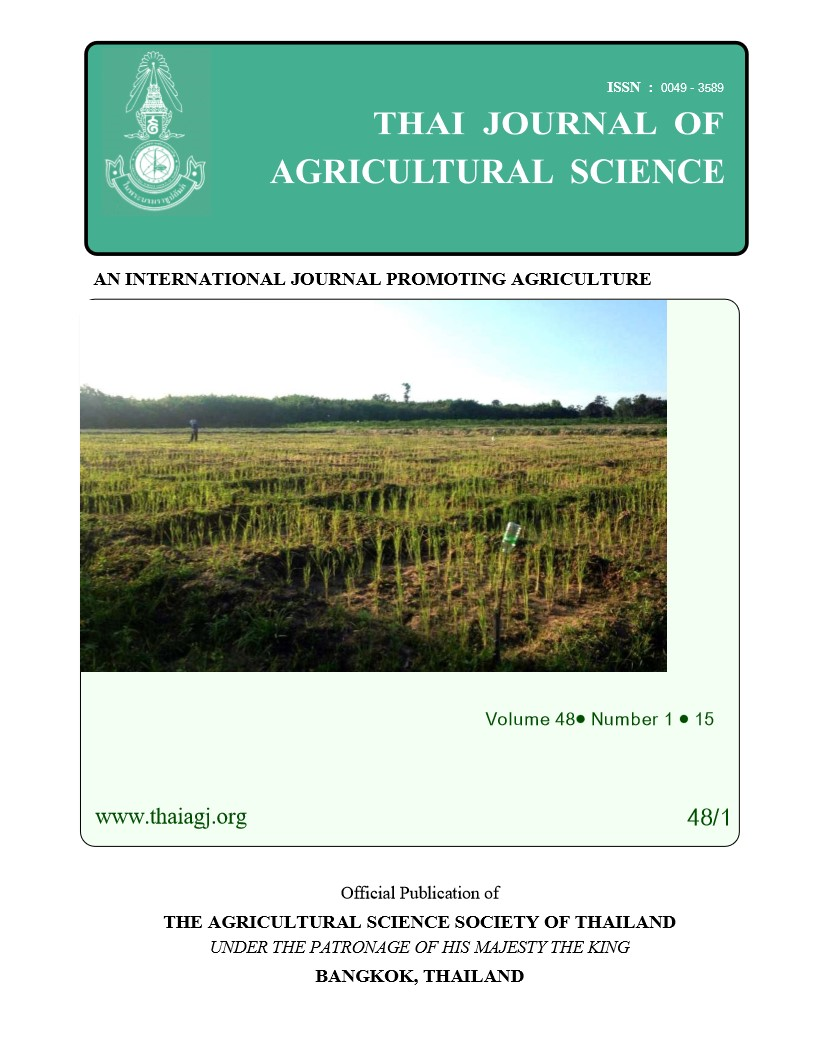Effects of Probiotic Bacteria on the Growth Parameters of the Thai Silkworm, Bombyxmori
Main Article Content
Abstract
The effects of Lactobacillus acidophilus, on the growth of two strains of Thai silkworm, Bombyxmori, Nang Lai and Nang Lai X 108 were studied. A suspension of L. acidophilus of 108 cells mL-1 was topically applied to mulberry leaves and fed during the 2nd, 3rd, 4th and 5th instars. On the other hand, control groups were fed mulberry leaves dipped in water. The effects of L. acidophilus treatment were investigated on quality parameters, such as survival ratio, mature larval weight, pupation ratio, cocoon weight and cocoon shell ratio. Silkworms treated with L. acidophilus showed positive results compared to the control group. Improvement of growth parameters was recorded in Nang Lai vs control, with a survival ratio of 92.66 ± 1.52% vs 84 ± 1.00, a larval weight of 1.26 ± 0.05 g in the 5th instar (5th day) vs 1.18 ± 0.05, pupation ratio of 91 ± 1.00% vs 82.33 ± 1.52, cocooning ratio of 91.33 ± 1.52% vs 85 ± 1.00, cocoon weight of 1.08 ± 0.09g vs 0.94 ± 0.07, and cocoon shell ratio of 14.95 ± 0.06% vs 12.78 ± 0.15. Likewise, Nang Lai X 108 vs control showed satisfactory quality parameters with a survival ratio of 91 ± 1.73% vs 80.33 ± 0.58, a weight of 1.70 ± 0.09 g in the 5th instar (5th day) vs 1.53 ± 0.05, pupation ratio of 90.33 ± 1.52% vs 83 ± 1.00, cocooning ratio of 90.33 ± 0 .57% vs 81 ± 1.00, cocoon weight of 1.18 ± 0.01 g vs 1.15 ± 0.00, and cocoon shell ratio of 16.67 ± 0.51% vs 16.01 ± 0.62. This study indicated that L. acidophilus stimulated growth factors leading to an increase in the silk yield and to an improvement of the silk harvest. The study also indicates that mulberry leaves could be used as a nutrient for L. acidophilus.


